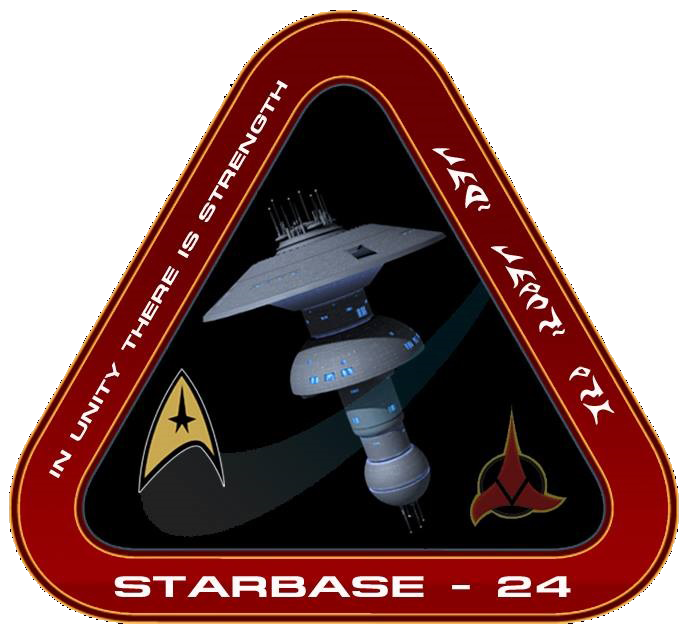
Specialist Divisions The Judge Advocate General (JAG) Office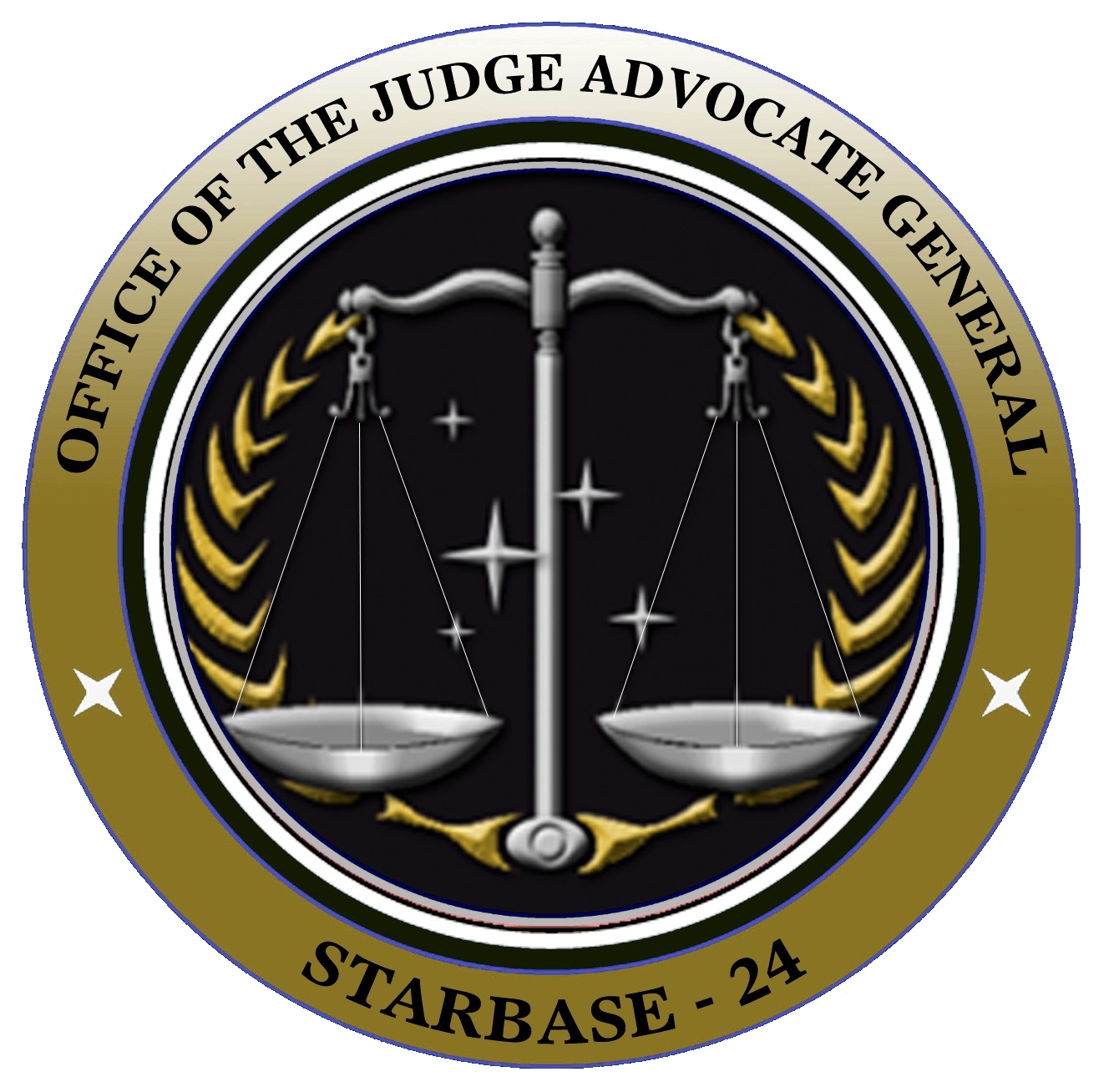 The
Office of the Judge Advocate General (JAG) provides comprehensive legal
services to Starfleet in many fields, including criminal law,
international law, administrative law, legal assistance, maritime law,
Space Time and environmental law. The
Office of the Judge Advocate General (JAG) provides comprehensive legal
services to Starfleet in many fields, including criminal law,
international law, administrative law, legal assistance, maritime law,
Space Time and environmental law.
JAG carries out investigations
of wrong-doing by Starfleet officers and convenes courts martial when
necessary. Although the JAG itself is headquartered at Starfleet
Command in Falls Church, Virginia, Earth, they maintain offices on all
major starbases. Any incident requiring the intervention of JAG is
referred to the nearest local office, though extremely important cases
or those involving high-ranking officers are often pulled back to
Starfleet Command for JAG’s personal attention. For the purposes
of the Rapid Response Fleet, the local JAG office can be found at
Starbase 24. In addition to upholding the Uniform Code Of
Starfleet Justice, JAG investigates and prosecutes cases involving
violations of Starfleet’s General Orders, the Constitution of the
United Federation of Planets, and the laws of Federation member worlds.
The Judge Advocate General’s office has jurisdiction over any member of
Starfleet accused of wrongdoing, even if the violation occurred under
local law. Normally, on a member planet, local authorities remand the
accused officer to Starfleet’s custody, and the officer is tried under
the Uniform Code Of Starfleet Justice. On a non-aligned planet,
however, this is largely a question of custody; once in an alien jail,
it is within the planet’s rights to try the accused. Starfleet,
however, works hard to convince the planet’s government to surrender
the accused for court-martial proceedings. This isn’t always
successful, and more than one officer has faced trial on an alien
world, under unfamiliar (and sometimes poorly understood) laws. Often,
in the case of laws broken on a non-member world, the JAG office will
invite a representative of the local government to observe, or even
present evidence. Starfleet Criminal Investigative Service (SCIS)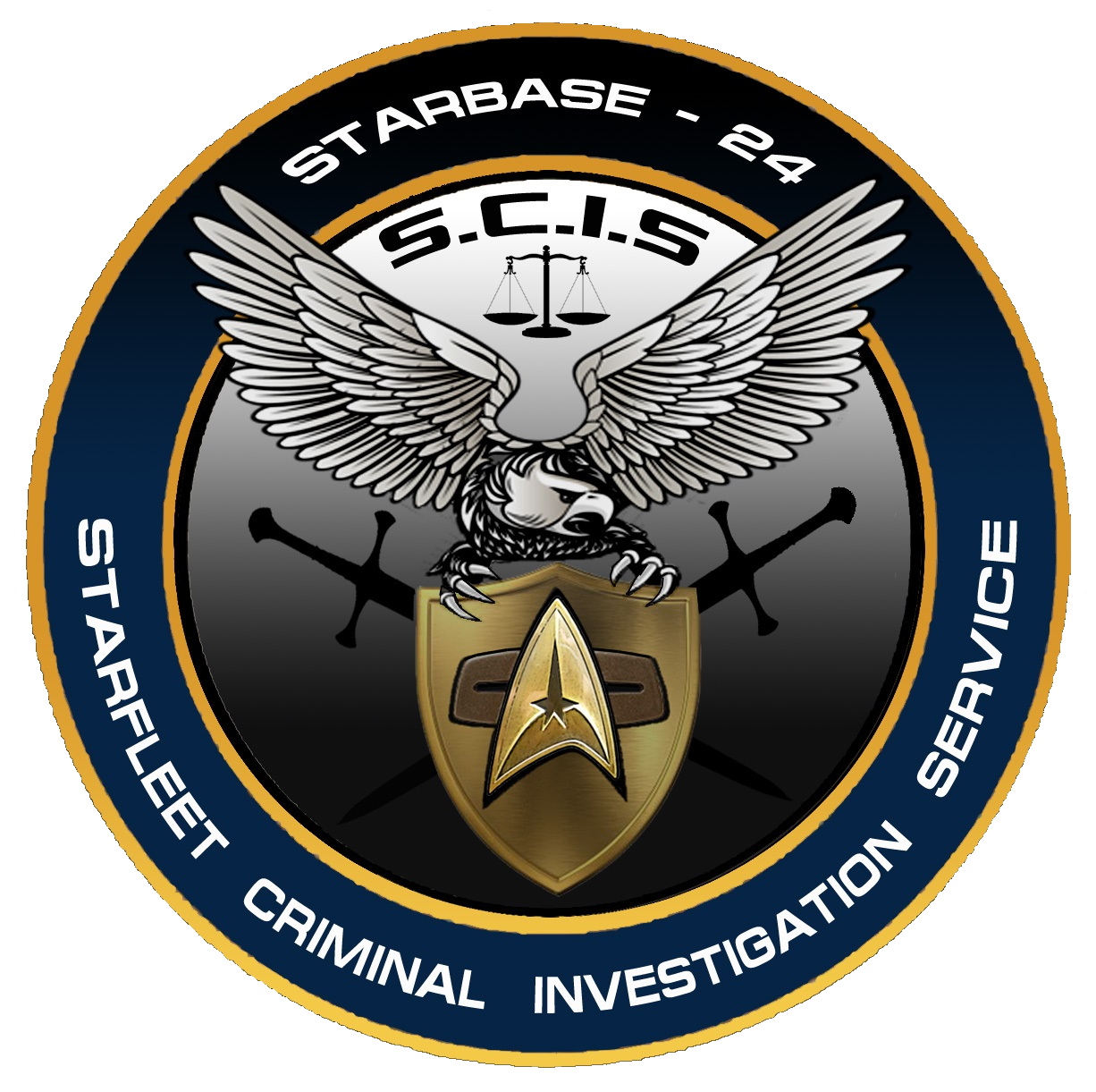 A
descendant of the US based Naval Criminal Investigative Service, the
SCIS is the Federation mandated law enforcement agency charged with
conducting investigations of felony-level offenses affecting Starfleet
and the Starfleet Marine Corps – that is, crimes punishable by
confinement for more than one year. A
descendant of the US based Naval Criminal Investigative Service, the
SCIS is the Federation mandated law enforcement agency charged with
conducting investigations of felony-level offenses affecting Starfleet
and the Starfleet Marine Corps – that is, crimes punishable by
confinement for more than one year.
SCIS also performs
investigations and operations aimed at identifying and neutralising
alien foreign intelligence, interplanetary terrorist, and
extra-terrestrial threats to Starfleet and the United Federation of
Planets. In addition, it provides warning of threats and specialised
defensive force protection support to Starfleet and allied Starbases
throughout the Alpha and Beta Quadrants. SCIS is comprised of
some 20,000 personnel, approximately 90% of whom are civilian, in over
40 sectors around the galaxy. Criminal investigation is at the
foundation of virtually all the organization does, but the SCIS mission
is broad. Interplanetary terrorism has been and remains a key focus
area for the agency. The history of the organisation from which
is it decended and the Maquis/Cardassian threat in the early made clear
to SCIS that merely reacting to crime – the traditional law enforcement
model – was no longer adequate enough. After the attack on the USS Cole
in orbit of Cardassia in 2368, SCIS adopted a more proactive model of
law enforcement and a new strategy for engaging the threat. Starfleet Marine Corps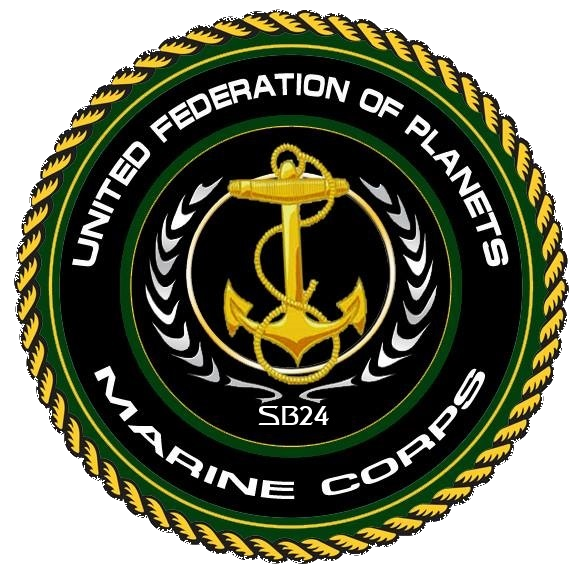 "By Land, Sea and Stars" "By Land, Sea and Stars"
In
the wake of the many conflicts facing the Federation in its early days,
Starfleet Command realised that they needed a dedicated division that
could specialise in ship-to-ship boarding operations and mission
profiles more commonly associated with traditional 'pre-warp' infantry
operations. In much the same way that the Starfleet Corps of Engineers
operates as a semi-autonomous part of the Fleet, Command commissioned
the Starfleet Marine Corps. Inspired by historic groups such as
the British Royal Marines and the US Navy Seals as well as the MAKO
teams used by the early Starfleet, the SFMC drew officers from across
all departments who had a proven aptitude for, or experience of,
combat. Special consideration was given to personnel who had entered
Starfleet from an existing planetary defense unit (for example: the
Bajoran Militia) as well as former members of groups like the Maquis. To
assist in providing dedicated training, Starfleet Academy re-purposed
the old West Point and Sandhurst military academies on Earth, as well
as several satellite facilities on Federation member worlds with either
a tradition of military service or with environments that provide
harsher than normal training grounds. Any cadet opting for the
SFMC programme is required to undergo standard Academy training for
their departmental specialty with an increased focus on combat
operations, before an additional six months at a Marine Corps facility.
At the end of this time they are permitted to wear the distinctive
green stripe of the SFMC, either on its own or in addition to the
speciality they trained in. The SFMC currently deploys in one
of two ways: either in units assigned to a specific ship or base as a
supplement to standard tactical units; or aboard one of the
(increasing) number of ships assigned to the SFMC and crewed
exclusively by Marines. Currently this flotilla consists of several
Akira-class vessels outfitted as the carriers they were originally
designed to be, and a larger number of Defiant-class escorts. Starfleet Special Forces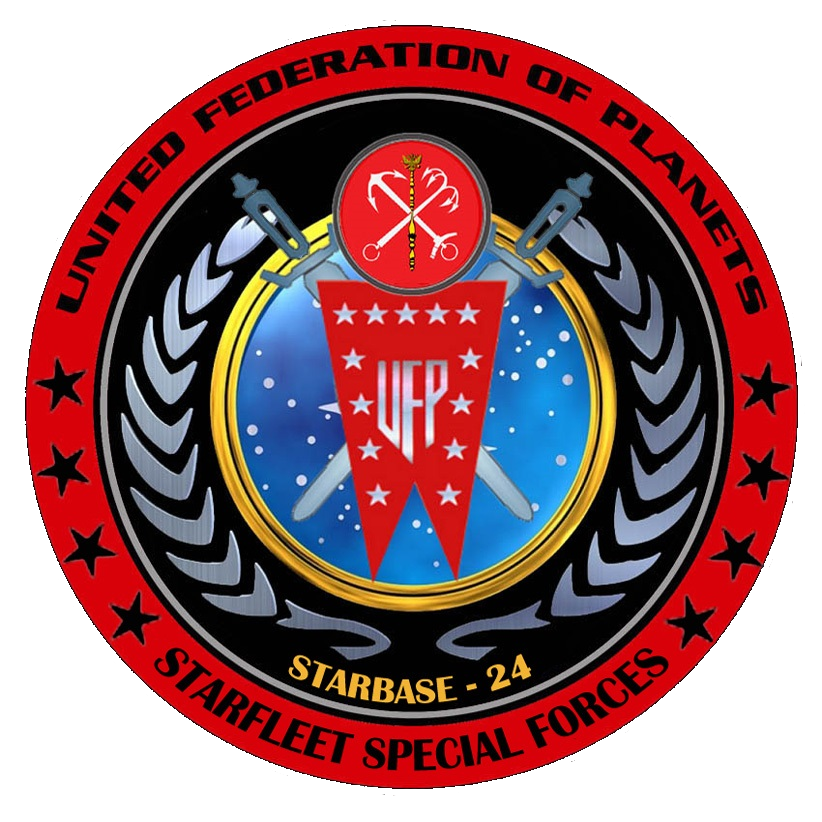 "To protect the Federation and its Constitution at any cost & by any means" "To protect the Federation and its Constitution at any cost & by any means"
Starfleet
Special Forces were formed after the disastrous First Contact with the
Klingon Empire. Its original maximum strength was set at 5000
personnel. SSF took part in many operations against the Klingon Empire,
until the end of hostilities in 2293 (this included a number of Black
Ops). After the destruction of Praxis, amid widespread rumours
and speculation as to the possible involvement of SSF, Colonel West,
then-Head of SSF, was found to be involved in the plot to assassinate
the Federation President during the peace negotiations at Khitomer. As
a result, over the next fifty years, SSF was allowed to waste away to
just over a hundred personnel. With the advent of the war with
Cardassia in the mid 24th Century, the need for the Special Forces grew
again, however numbers were cut back again following the Truce of 2366.
They worked closely with Section 31 during the intelligence gathering
stages of the war against the Borg. It was only during the
Dominion War that the requirement for Starfleet Special Forces was
proved necessary, as they were frequently assigned to protect the
President of the United Federation of Planets whilst threat of
assassination by Founder infiltrator was present. With the
formation of the Rapid Response Fleet after the end of the Dominion
War, a division of SSF was permanently assigned to Starbase 24 under
the command of Brigadier Colonel Ivan Dragunov. | 

